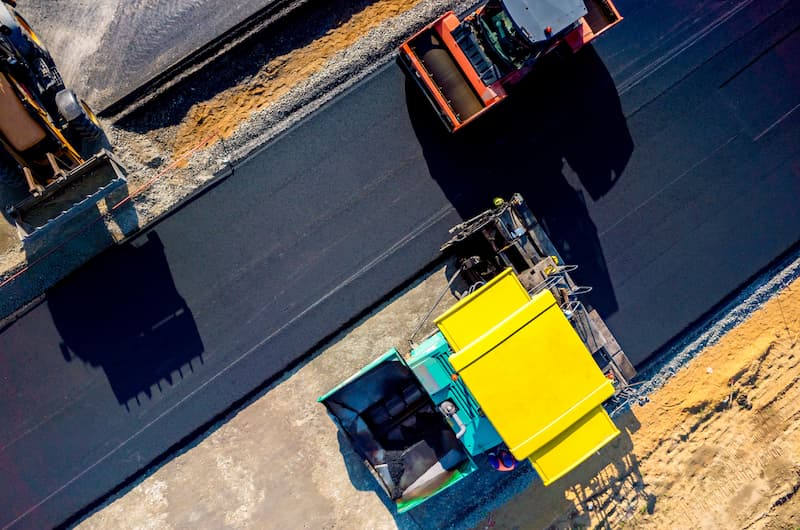The 8-Second Trick For A1 Professional Asphalt & Sealing Llc
The 8-Second Trick For A1 Professional Asphalt & Sealing Llc
Blog Article
The Basic Principles Of A1 Professional Asphalt & Sealing Llc
Table of ContentsThe smart Trick of A1 Professional Asphalt & Sealing Llc That Nobody is DiscussingThe 6-Minute Rule for A1 Professional Asphalt & Sealing LlcA Biased View of A1 Professional Asphalt & Sealing LlcA1 Professional Asphalt & Sealing Llc Fundamentals ExplainedThe Main Principles Of A1 Professional Asphalt & Sealing Llc

The oil in a car engine is not just oil. The REOB includes all the ingredients that were in the waste oil as well as the wear steels from the engine (primarily iron and copper).
By making numerous blends utilizing various REOB examples and different asphalt binders, the variations mainly can be averaged out. Numerous States supplied examples of well-known REOB composition to TFHRC researchers, who examined the samples to contrast the percentage of included (understood) REOB to the found (tested) amount. The analyses revealed an equivalent percentage of included and located REOB.
Facts About A1 Professional Asphalt & Sealing Llc Uncovered
They got a frustrating feedback. The TFHRC scientists analyzed 1,532 examples from 40 States, one Canadian district, and 2 Government Lands Freeway departments. They assessed each sample twiceamounting to even more than 3,000 analyses. None of those States recognized that the asphalt they were getting consisted of REOB. One State insisted its examples had no REOB.
Of the 1,532 examples examined, 12 percent consisted of REOB, and some contained substantially high levels of it at 1020 percent. The highest degree was 34 percent in an example from Texas, which TxDOT had utilized in a patching substance. This screening also exposed the visibility of phosphoric acid in 11 percent of the samples, and 2 percent consisted of ground tire rubber.
Two years ago at TRB's yearly meeting, the Federal researchers held an REOB workshop and offered the findings of their laboratory evaluations to a standing room-only group. Some agencies do not particularly ban REOB, they do enforce physical examinations that avert its useeffectively a ban. Others do not prohibit it by specification, yet have agreements with asphalt distributors to prevent the usage of REOB
Everything about A1 Professional Asphalt & Sealing Llc
A handful do enable REOB, some within certain restrictions. As an example, Ohio and Texas restriction levels to much less than 5 percent of the asphalt. To create a trusted test method that all States can utilize, the TFHRC scientists established up a round-robin test plan. The individuals are 11 State freeway agencies (Illinois, Massachusetts, Minnesota, Mississippi, Montana, North Carolina, Oklahoma, South Carolina, Texas, Vermont, and Wyoming), 2 independent testing laboratories, the Ministry of Transportation in Ontario, Queen's College in Ontario, and an Ontario paving service provider.
In overall, the researchers prepared and shipped 720 blends. The individuals are testing the examples separately making use of the standards supplied by the TFHRC scientists. The round-robin screening is nearly finished, and TFHRC remains in the procedure of gathering the results. The outcome will be a proposed AASHTO examination technique that any type of State can take on and utilize (asphalt paving repairs).
The pavement with REOB, which is located 0.6 mile (1 kilometer) from the sidewalk without REOB, has the same subgrade, web traffic density, and climate. The section of Highway655 with 5 to 10 percent REOB showed substantial fracturing. In this example, the presence of REOB was the recognized reason for cracking at a reduced temperatures.
An area of test sidewalk in Minnesota (MN1-4) located to have REOB additionally fractured prematurely. The pavement performed well for the initial 3 to 4 years, but after that began to fracture.
The Buzz on A1 Professional Asphalt & Sealing Llc
The examinations were not substantial, but they revealed that at degrees of 6 percent or even more, the tensile toughness of the asphalt dropped substantially. At a degree of 3.5 percent REOB, the variant in the physical test methods was more than the effect of REOB. Actually, it was hard for researchers to evaluate whether REOB was try this web-site present.

One binder criterion taken into consideration is the difference between the low temperature level important requirements temperature level for tightness (S) in the flexing beam rheometer and the flexing light beam rheometer creep incline (m-value) noted as Tcritical. Two independent research groups, one from AASHTO and the various other from the Asphalt Institute, concluded that even more study is required on the use of REOB in asphalt.
Formerly, all asphalt screening gauged engineering homes such as stiffness. These tests do not show what materials had been included in the asphalt. One example received during the TFHRC study had a very unusual evaluation. The sample had the following examination outcomes: Superpave PG 64-28 with a high temperature level quality of 67.3 Tcritical on the flexing beam rheometer was 6.7 degrees Celsius.

A1 Professional Asphalt & Sealing Llc Fundamentals Explained
These results demonstrate there are weak points in the standard design screening protocols that may be manipulated. The producer might have an economic advantage and the item passes all the standard tests, yet the item might not be valuable to ensuring long-lasting efficiency. To resolve this concern and the growth of brand-new asphalt ingredients and extenders, TFHRC is beginning a study program to utilize handheld spectroscopic devices, x-ray fluorescence spectroscopy, and Fourier change infrared spectroscopy to make it possible for analyses to be performed in the field as opposed to needing to take samples back to the lab.
Report this page